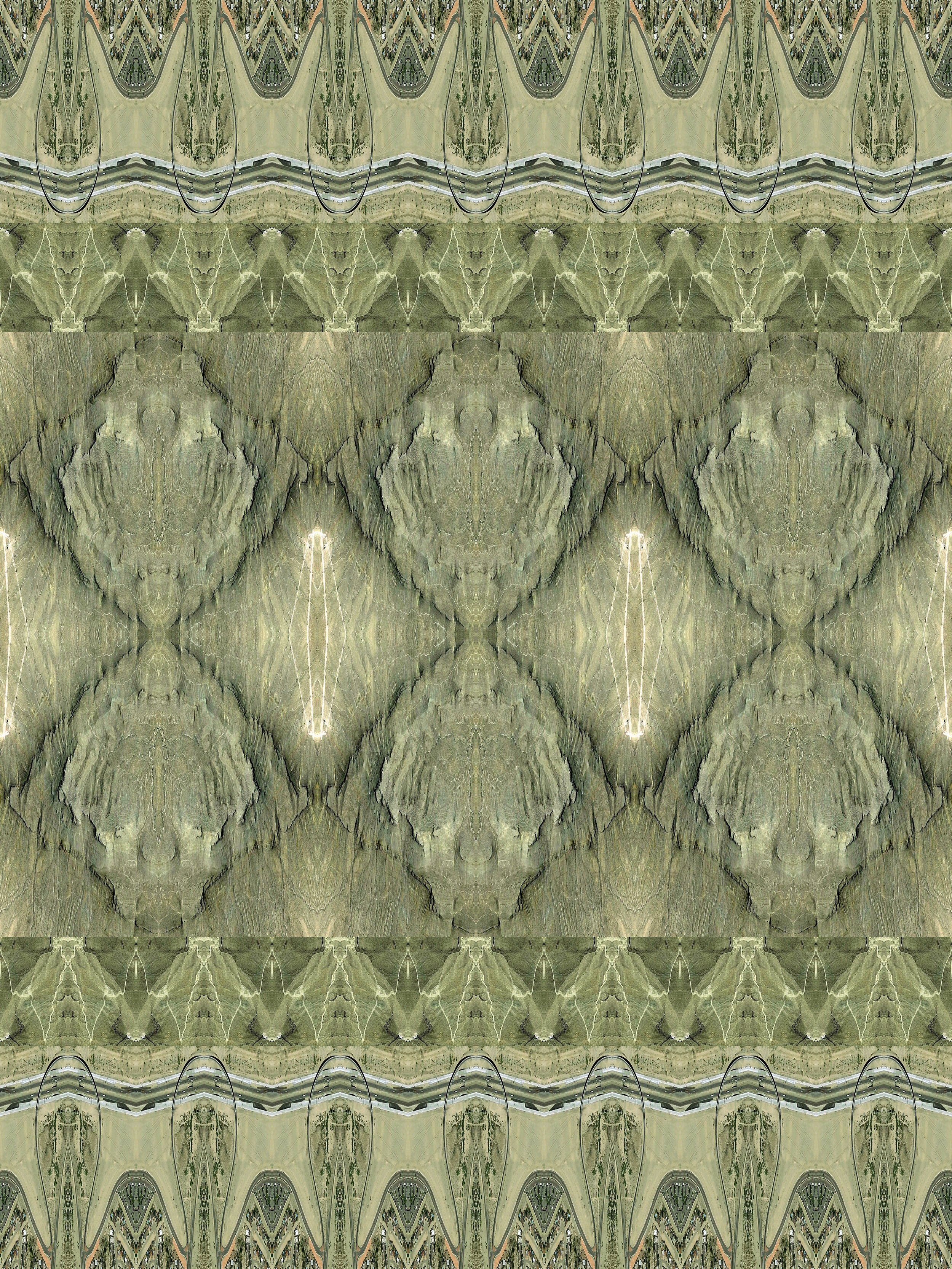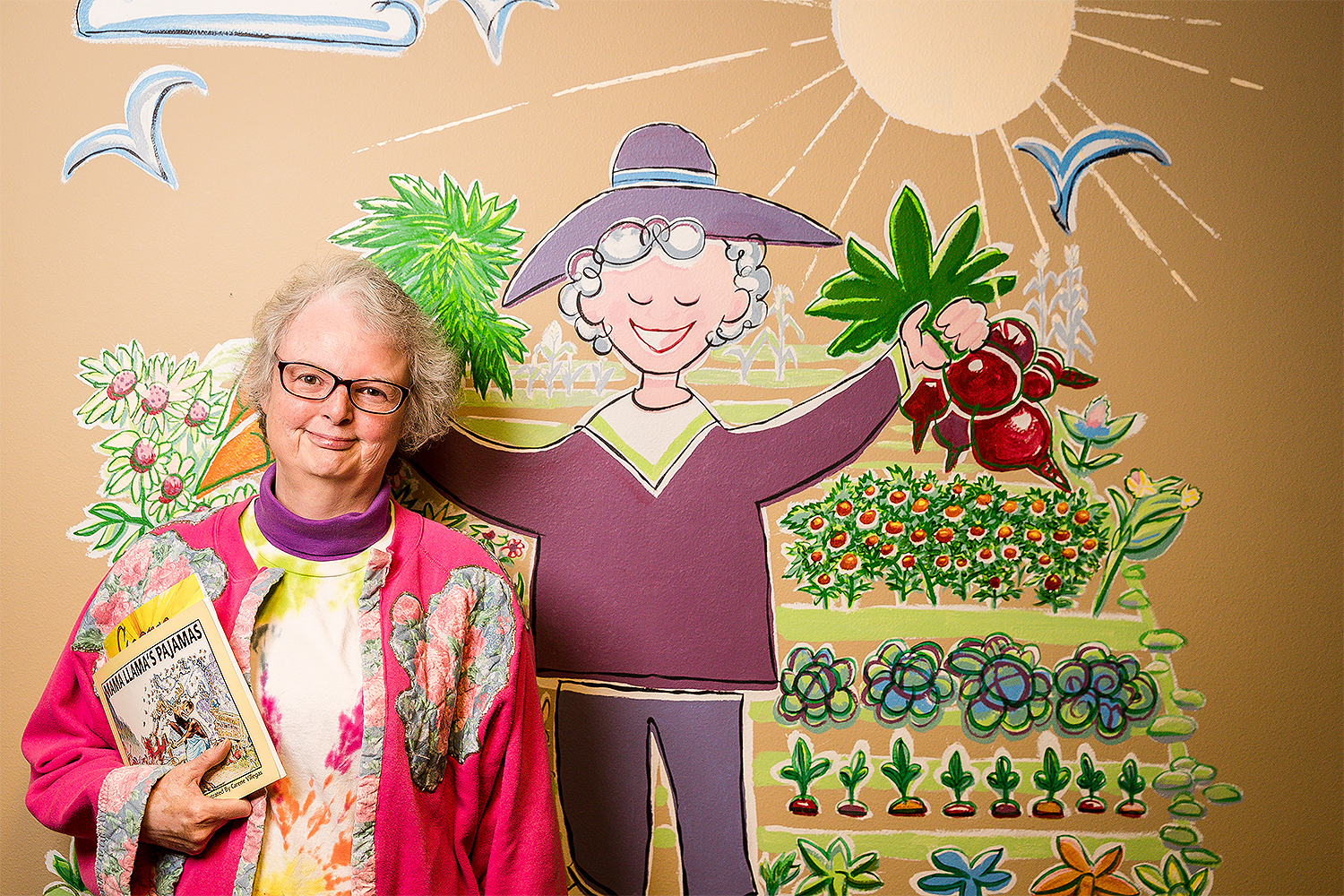Portraits in Artistry

Great art tells detailed stories of the individuals who create it. The Umpqua Valley is home to scores of talented artists telling their stories through a multitude of media. While, regrettably, it is impossible to feature all those who deserve recognition, we’d like to introduce you to four of the many who, to our good fortune, call this place home.
Story by Dick Baltus Photos by Thomas Boyd
SUSAN ROCHESTER
Her lifelong interest in borders and the cultures on either side of them has led to two one-of-a-kind artistic endeavors.
For as long as she can remember, Susan Rochester has been fascinated by the often arbitrary lines that separate country from country, people from people.
“I was born in the Los Angeles area, and I remember wondering why the Mexican border was where it was,” the Sutherlin resident remembers. “If it had been shifted just 100 miles to the north, I would have been a Mexican citizen.”
In 2017, Rochester was awarded a Fulbright Scholarship that funded a trip to the eastern Mediterreanean island of Cyprus, which was divided after a Turkish invasion, and her interest in borders and the cultures around them only grew.
“Before 1974, Cyprus was a unified country, but now you had people who had the same stories, ate the same food and believed in the same God separated by a line that some British guy randomly drew across a map,” she says. “After the island was partitioned, inhabitants were forced to choose whether to settle in the Greek-speaking south or the Turkish-speaking north.”
This year Rochester, an associate professor and chair of performing and visual arts at Umpqua Community College, decided to turn her longtime interest into two artistic pursuits. The first is to create a scale model map of the nearly 2,000-mile border separating Mexico and the United States.
“I’ve always wanted to be able to walk along a scale model of the border, but as far as I can tell there isn’t even one available that you can look at,” she says. “Even on a Rand McNally map, you do OK from California to Arizona, but when you get to Texas, the scale changes.”
Rochester didn’t want just a map anyway; she wanted a photographic representation. So she started piecing together her own using Google Earth tools.
Ultimately, her goal is to create a scale model that will be folded accordion style and bound with a copper cover and leather spine.
Rochester says that, while anyone can follow along the border on Google Earth, she wants to create a more tactile experience. “You just don’t get a sense of scale on a computer screen,” she says. “I want to create something you can spread out and actually walk along.”
It will be a decent jaunt. Rochester has completed California and it, alone, is 200 feet long. But she hopes those who take the journey will make rewarding discoveries along the way.
“A Landscape of Belonging” by Susan Rochester.
The many discoveries Rochester has made herself throughout the process led to a second, related project.
“As I was looking at elements of landscapes and structures along the border, I was seeing shapes and motifs that show up throughout history in Southwestern weavings and art,” she says. “So I started digging into the images and pulling out bits and pieces from both sides of the border, then stitching them back together, sometimes flipping the images, then recombining them. And in the process, I noticed I was getting these motifs I had seen in weaving traditions.”
To date, Rochester has created 30 of the images, turning tiny points on a map – part of a bridge, a piece of a mountain range, a tiny portion of a running track — into beautiful art inspired by weavings and Navajo saddle blankets.
All of the pieces tell stories about the regions from which their images were pulled as Rochester explained in a recent Facebook post.
“Texas and Mexico are joined by 1,254 miles of shared border,” she wrote. “There are 28 border crossings between them, including bridges, dams and a hand-drawn ferry. This border weaving is composed of the border control infrastructure at four of these crossings.”
Rochester’s project is being supported by grants from the Douglas County Cultural Coalition/Oregon Arts Commission and Ford Family Foundation.
CARENE VILLEGAS
After she temporarily lost her ability to speak as a child, Carene Villegas turned to art as her primary means of communicating.
By Dick Baltus
Carene Villegas could draw before she could talk. It was a skill that would prove invaluable at a very young age, after she had learned to talk, but had lost the ability to.
“I started drawing when I was two and a half,” says the Los Angeles native, who moved with her parents to Roseburg in 1972. “In my baby book there’s a drawing I did of a Valentine card with my mother on it, pregnant with my little sister. I always could just do it.”
As a child, Villegas was drawing “everything I saw – insects, animals. I was just drawing how I saw things,” she says.
Then, before she had turned 5, she was in a car accident that left her brain-injured and temporarily unable to speak. When she entered school, she struggled, able to understand what classmates and teachers were saying to her, but unable to respond. At least verbally.
“I was forced to communicate through pictures,” she remembers.
Around the same time, a seminal moment occurred in her early artistic development when she met renowned Western artist, the late George Phippen. Villegas was only 6 at the time, but the encounter left a lasting impression.
“He was an inspiration; I wanted to be an artist like him,” she says.
Despite struggling in school, Villegas was a high-performing student. Eventually, her mother scraped together the money to hire a personal art teacher, who tutored the youngster for four years.
Villegas gradually relearned to talk, but, she says, “My weakness was my vocabulary, and I still struggle. But I’ve been working hard to overcome my deficiencies.”
Today, you wouldn’t notice any deficiencies in either her speech or her art, which provides much of the wall décor at Southern Oregon Regional Brokerage, a provider of support services for adults with developmental abilities. The building on Stephens Street in Roseburg is a virtual Villegas gallery, showing off her diverse talents.
The waiting area and main floor hallway are adorned with her whimsical cartoons. Throughout the facility, framed landscapes and stampeding horses showcase a completely different skill set. In addition to paintings, Villegas has created masks and worked in ceramics among other media.
She provided the cartoon art for three books by children’s author Doreen Dahl, has painted backdrops for plays and finished enough other pieces to fill a storage shed, she says.
As traumatic as that car accident was for the young budding artist, Villegas thinks it may have been a positive turning point in her life.
“I think that accident was a calling,” she says. “I couldn’t tell anyone what had happened to me, but I could draw it up, and everybody knew.”
KEVIN CLARK
He works out of an inconspicuous studio in Roseburg, but his woodblock art is familiar to art aficionados near and far.
By Jim Hays
Kevin Clark has never taken an art class and says he can’t remember how he learned to make the woodblock prints that make up the bulk of his works.
“It’s just something I used to do as a kid for fun with my grandpa,” says Clark.
A native of Southern California who earned a botany degree in college, Clark moved to Roseburg in 1989. It was a year later that his elderly, long-retired grandfather, John Carey, also moved to Roseburg to be nearer his family.
Carey, by trade a contract printer and designer, brought along his century-old, two-ton, Chandler & Price cast-iron press — which today sits in Clark’s studio on Northeast Exchange Street in Roseburg and is still used on occasion.
Clark and Carey reconnected by doing a line of block print greeting cards sold in 28 shops and stores. But by the early 1990s, Clark had left a local sales job and started producing block prints full time. Carey died in 2003 at age 99. By then, Clark’s works were impressing buyers and critics alike.
His works hang in such diverse and distinguished locales as the Smithsonian in Washington, D.C., and 19 art museums from Belgium to Brazil to Japan.
Woodblock printing dates back to the third century in China and, later, Japan. The basic process involves carving the face of a wooden block with relief images, a painstaking technique that can take days or even weeks to complete.
The carved block is inked and printed as an image on the desired surface. To add colors, traditional artists carved a second block, a third and so on to overlay onto the original image.
Clark has produced more than 400 prints. He prefers using local fir, oak and myrtlewood for his works, and his prints are often characterized by dramatic woodgrain as a backdrop to the image, lending them an abstract quality.
Although he sometimes uses multiple blocks, Clark’s basic technique can involve carving and inking only a single block of wood in all the print’s designed colors and making several prints from that block. As each copy is made, the colors are changed and the edges of the print are altered by the weight of the press on the block. Because none of the “copies” are identical, each becomes an original in itself.
Clark has tried other art media, but knows where his niche is.
“I really can’t paint,” he says. “But for some reason, I’m good at this.”
JAN BARBA HORN
The paintings of one of the Pacific Northwest’s premier artists are hanging on hundreds of walls, from the Umpqua Valley to the White House.
By Jim Hays
Descended from a Quaker pioneer family whose first Northwest home was a tent in the shadow of Mount St. Helens, Jan Barba Horn has become as much part of the Umpqua Valley as its eponymous rivers since casting her keen artist’s eye on the area more than 60 years ago — when she moved from the Silver Lake area on the Cascades’ western slope.
Living first in Glide and now Myrtle Creek, Horn has put brush (or pastel) to canvas on thousands of occasions in her long career and has portrayed a multitude of local landscapes, animals and impressionistic scenes.
Regarded as one of the Pacific Northwest’s premier artists, Horn’s works are included in many public and private collections — including the White House. She began with watercolors, then moved into oils. Her current medium is pastels.
A recent painting, “Ready for Work,” was accepted for the International Association of Pastel Societies’ annual online show. The piece — a striking group portrait in pastels of five herding dogs at rest — was also included in Horn’s one-woman show “The Endless Journey,” which opened in November at the Umpqua Valley Arts Center on Roseburg’s West Harvard Avenue.
Other paintings in the show included nuanced scenes of models — often Horn’s grandchildren — wearing vintage costumes in pastoral settings. And a favorite subject, the moods and seasons of the North Umpqua.
“I always like coming back to that,” says Horn.
“Ready for Work” by Jan Barba Horn
Last fall, she and Mary Lee Hope, a local multi-media artist, organized a mural painting event for the Umpqua Valley Boys & Girls Club. Assisted by others, the two got a wall near the club prepared for a mural, then helped club members use whatever colors they chose to paint in the images.
Horn also discovered the poetry set down by her great-grandmother, Lucinda Ann Horning, one of those who endured a wagon ride west, then dwelled in that tent while her family built a wooden house. The poems and journal entries were copied from the original longhand and published in 2001 as “Leaves from the Past,” with Horn providing illustrations.
Horn’s “Endless Journey” speaks to her evolution as an artist. “I enjoy seeing where it takes me,” she says.
GALLERY GUIDE
No matter where you are in the Umpqua Valley you aren’t far from a gallery showcasing the work of one or more of our many talented artists. And, winter upon us, now’s a great time to seek out the beautiful shelter of one of these area galleries.
REEDSPORT
Mindpower Gallery
417 Fir Ave.
Ellie’s Chainsaw Art Gallery
532 Fir Ave., Reedsport
Myrtlewood Gallery
1125 Highway 101
GARDINER
Three Rivers Gallery
77231 US-101 Suite A
Tsunami Gallery
77207 U.S. 101
RIDDLE
Clay Potential Pottery
219 N. Main St.
SCOTTSBURG
River Raku
176 Wessela Lane
ROSEBURG
Gallery Northwest
625 S.E. Jackson St.
Kevin Clark Studio
130 N.E. Exchange Dr.
Umpqua Valley Arts Center
1624 W. Harvard Ave.
UCC Art Gallery
Whipple Fine Arts Building 1140 Umpqua College Road.
DRAIN
DIVA Art Gallery
128 W. C Ave.
ELKTON
Elkton Community Education Center
15850 Highway 38 W.
MYRTLE CREEK
Ye Olde Art Shop
106 NE Oak St.

















